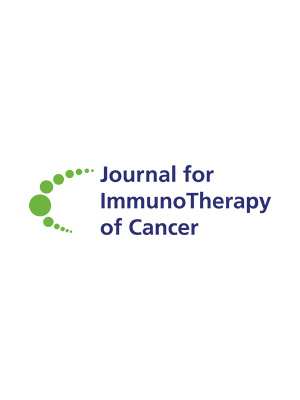Cancer cell genotype associated tumor immune microenvironment exhibits differential response to therapeutic STING pathway activation in high-grade serous ovarian cancer

High-grade serous ovarian cancer (HGSC) is known to have a high degree of both genetic and immunologic heterogeneity, can be resistant to chemotherapy, and commonly recurs in patients. It is also the most common form of ovarian cancer and represents the most lethal gynecologic malignancy.
HGSC tumors show mutations in the DNA damage repair BRCA1 and BRCA2 genes in about 50% of cases and exhibit a phenotype of chemosensitivity. In contrast, HGSC tumors with mutations in the PTEN gene are associated with a phenotype of chemoresistance and are found in about 10% of cases.
Shakfa and colleagues were interested in addressing the unmet need of patients who are chemoresistant and have an insufficient immune response. Further, they wanted to understand the impact of cancer cell genotypes on the tumor immune microenvironment. In this publication they aimed to better understand how loss of PTEN or BRCA1 impacts the tumor immune microenvironment, response to chemotherapy, and survival. In addition, as the authors previously demonstrated that activation of the stimulator of interferon genes (STING) pathway in HGSC leads to increased production of chemokines that recruit cytotoxic CD8+ T cells to the tumor immune microenvironment, they sought to investigate the impact of STING pathway activation in the context of deficiency for BRCA1 or PTEN. In this publication highlight, we focus on the PTEN component of the study.
To investigate PTEN expression in patient tumors, tissue microarrays were prepared using pretreatment tumors from a cohort of 110 HGSC patients. A section was stained for PTEN and was scored for expression. Normal expression of PTEN was identified in 57 of the tumors and 10 tumors completely lacked PTEN expression. Kaplan-Meier survival analyses demonstrated a significantly shorter survival of patients with tumors lacking PTEN expression compared to patients with intact PTEN expression in tumors.
The 67 tumors were then subjected to multiplex immunofluorescence staining for CD8, CD68, and Pan-cytokeratin. All TMA images were visualized using the HALO Link image management platform and an algorithm was developed in HALO to segment stromal versus epithelial compartments and to define biomarker positivity. Next, algorithms were run in HALO Link to quantify DAPI stained nuclei with biomarker positivity in the stromal and epithelial compartments for PTEN-deficient and PTEN-intact tumors.
In tumors lacking PTEN, the authors found a decreased number of CD8+ cytotoxic T cells and CD68+ macrophages, however the results were not statistically significant. In addition, they found that the CD68+ macrophages infiltrated the stromal compartment only in the tumors without PTEN. In tumors with PTEN, the authors found CD68+ macrophages in the epithelium compartment.
In vivo studies of PTEN-deficient ovarian cancer cells corroborated the TMA studies and revealed an immunosuppressed tumor immune microenvironment. Further, they found that activation of the STING pathway in mice lacking PTEN led to an increased response to chemotherapy and improved survival, among other findings. The authors note that this publication establishes a rationale for using interferon activating therapies as part of a combinatorial strategy to treat PTEN-deficient HGSC.
Shakfa N, Li D, Conseil G, Lightbody E, Wilson-Sanchez J, Hamade A, Chenard S, Jawa N, Laight B, Afriyie-Asante A, Tyryshkin K, Koebel M, Koti M
Journal for ImmunoTherapy of Cancer | First published 4 April 2023 | DOI https://doi.org/10.1136/jitc-2022-006170